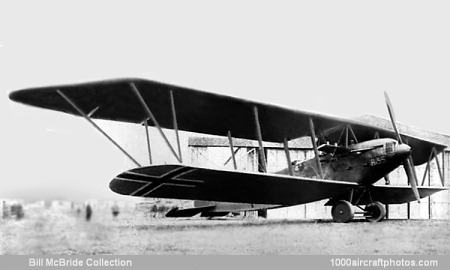The R.II was designed and constructed under the direction of chief engineer Paul Stumpf, who was formerly chief engineer to AEG. The chief feature was a single large tractor airscrew turning at only 545 rpm, driven through a central drive by four 260 hp Mercedes engines placed in the fuselage. The 22 ft 7.65 in (6.90 m) Garuda propeller was the largest ever to fly.
In 1917 the Idflieg ordered two examples (s/n 55/17, 56/17) for delivery in July 1918, however, the first was not flown until January 1919. Intended as a bomber, the aircraft was flown as a twelve-passenger aircraft operated by a crew of six. The biplane with wings of unequal span proved to be very stable, could be flown with one hand and even with only two engines running the aircraft flew well.
Span upper: 138 ft 3.84 in (42.16 m)
Span lower: 111 ft 5 in (33.96 m)
Length: 66 ft 8 in (20.32 m)
Height: 23 ft 3.5 in (7.10 m)
Wing area: 3,444.5 sq.ft (320.0 sq.m)
Empty weight: 17,637 lb (8,000 kg)
Loaded weight: 26,455 lb (12,000 kg)
Max speed: 81 mph (130 kmh)
Cruise speed: 74 mph (119 kmh)
Climb: 394 ft (120 m)/min
